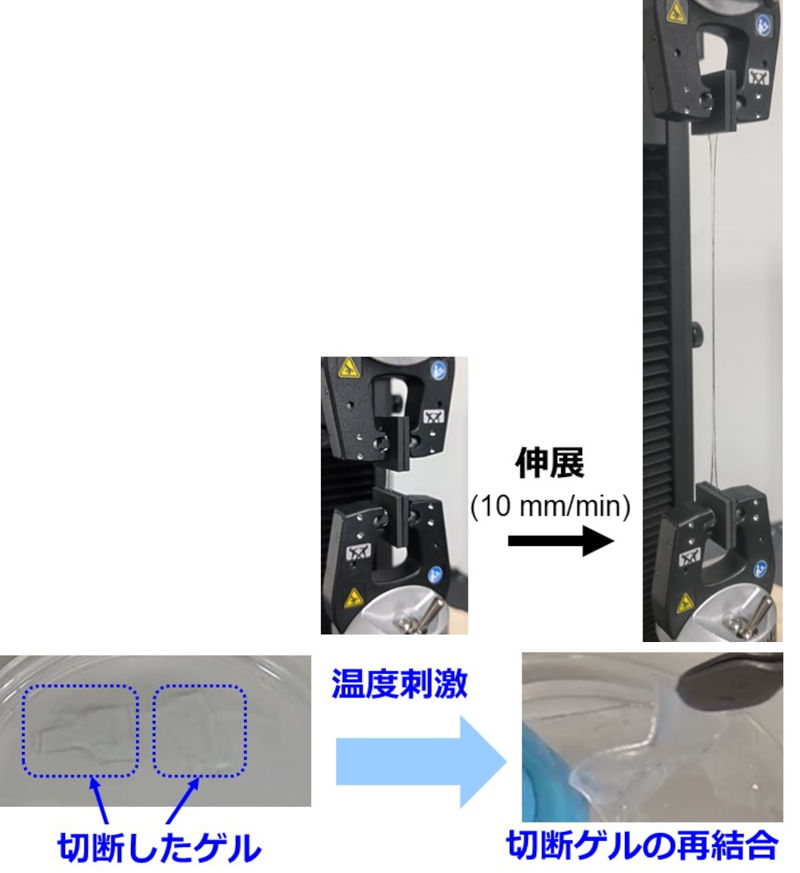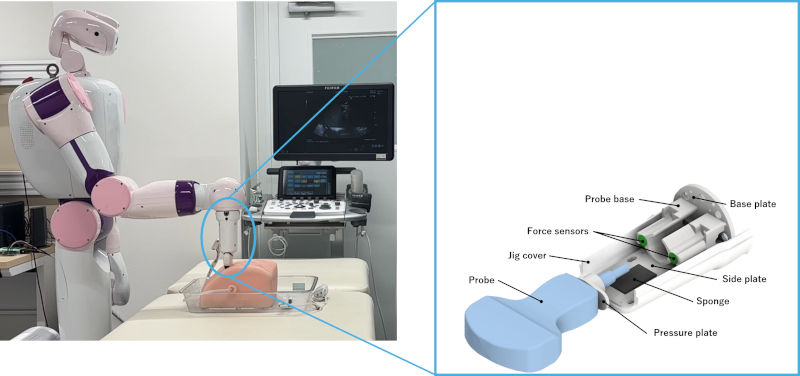Progress Report
Smart Robot that is Close to One Person for a Lifetime[3] Technologies for welfare and medical care with smart robots
Progress until FY2024
1. Outline of the project
Research and development have been conducted to develop a smart robot (AIREC, AI-driven Robot for Embrace and Care) to assist healthcare workers and visitors in healthcare facilities and hospitals where elderly care, nursing, and medical care are provided. As AIRECs interact with people, it is necessary for AIRECs to move gently and safely and to be able to use a variety of specialized tools for treatment. AIRECs are expected to play an active role in the medical and welfare fields, taking into consideration their affinity with people and safety.
2. Outcome so far
1) Information infrastructure system for health monitoring
A prototype system has been developed to gather biometric data such as body temperature and pulse, with future potential for managing various types of data from different manufacturers in one cloud-based platform. To enable natural, everyday interactions, a custom sensor was created for AIREC so it can gently approach people and collect health information by touch. A demonstration was carried out in which AIREC interacted with individuals while working together with the health data system to monitor their condition (Fig. 1).

2) Developing robotic hand skin
Work is underway on a robotic skin that can function like a human hand. This includes the development of stretchable gels that resemble human skin and gels with self-repairing properties (Fig. 2, right). Channels for transporting necessary substances, similar to human blood vessels, have also been built into some of these materials (Fig. 2, left).

3) AIREC functions for facility guidance
To make hospital navigation more personal, AIREC was equipped with a feature that adjusts its arm height based on the person's body size, using body shape detection (Figure 3). It also turns its face toward the direction it’s moving and lights up to make its path clearer to people nearby.

4) Ability to administer and manage medications correctly
A medication support system is being developed to help ensure the “5 Rights” of medicine administration: the right person, right drug, right dose, right method, and right timing. AIREC can deliver a medication case to the correct person, check the contents, and hand it over safely (Figure 4).

5) Robot hands that can be used in various places
Sensors combining self-repairing gel, cameras, and heat-sensitive particles have been developed to detect damage. An AI model was trained to identify when the gel is harmed (Figure 5, left). For detecting issues like lumps through touch, a new approach using vibrations in a two-finger robotic hand was explored (Figure 5, right). AIREC was also used to take ultrasound images, and an AI was created to evaluate the image quality and adjust the probe movements based on both image and force information (Figure 6, top left).

6) Welfare and medical robot design, quality assurance, international standardization, and risk management
Movements involved in turning a person from lying on their back to their side were analyzed and modeled according to body shape, to support caregiving with less physical strain (Figure 6, top right). Discussions were held by a dedicated committee on safety standards for general-purpose robots like AIREC in medical settings.
To examine real-world safety, trials began in a care facility using AIREC. These revealed the importance of understanding both the people AIREC helps and its surrounding environment (Figure 6, bottom). A new sensor module was also developed for the robot hand, combining flexible motion sensors with force sensors, allowing AIREC to estimate arm condition based on how firm or soft the touched area feels.

3. Future plans
In the future, we plan to link AIREC with the development results we have achieved so far and introduce AI to enable AIREC to perform each function accurately and autonomously while interacting with people. We also promote research that considers social ethics to enable AIREC to work in society.